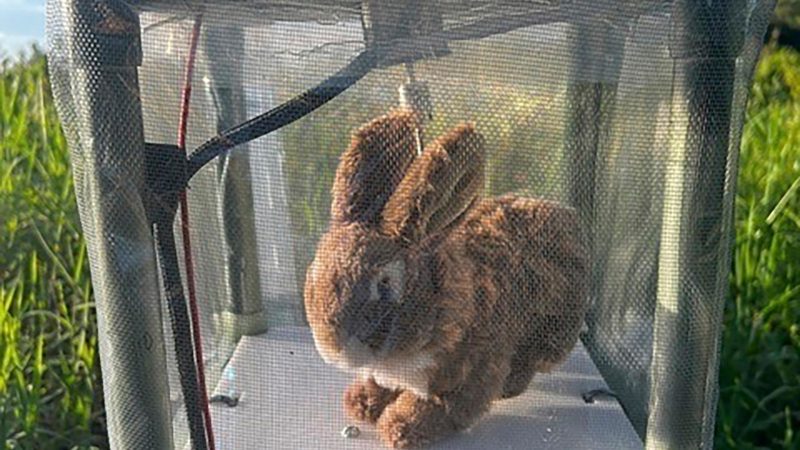
In the battle against invasive Burmese pythons in Florida’s Everglades, researchers have deployed an unlikely weapon: robot rabbits. These aren’t your average stuffed bunnies; these robotic replicas are designed to mimic the look, movement, and even the scent of a real Everglades marsh rabbit, a python’s favorite meal.
The South Florida Water Management District, in collaboration with the University of Florida, has deployed 120 of these robotic lures as part of a pilot program. The initiative comes after previous attempts using live rabbits proved too costly and time-consuming. The problem, as lead invasive animal biologist Mike Kirkland explains, isn’t removing the pythons – it’s finding them. Their exceptional camouflage makes detection extremely difficult.
These ingenious robot rabbits, essentially retrofitted toy bunnies, are equipped with solar power, heat sensors, and scent emitters. They also move naturally, further enhancing their realism. The rabbits are placed in small pens, each monitored by a video camera. When a python approaches, a signal is sent, alerting contractors to remove the snake.
While the cost of each robot is approximately $4,000, the water district believes this innovative approach may be a game-changer. Burmese pythons, non-native to Florida, have wreaked havoc on the Everglades ecosystem, decimating native species. Estimates of the python population vary widely, from tens of thousands to as high as 300,000.
The Florida Fish and Wildlife Conservation Commission has already removed over 23,000 pythons since 2000, but the sheer number of snakes and their reproductive capabilities (a female can lay 50-100 eggs at a time) pose a significant challenge. Annual events like the “Florida Python Challenge,” which offers cash prizes for captured pythons, have also contributed to control efforts. This year’s challenge saw 294 pythons caught by 934 participants.
It’s still early days for the robot rabbit project, but initial results are encouraging. The hope is that this technological approach will provide a more efficient and sustainable method for detecting and removing these invasive snakes, ultimately helping to preserve the delicate balance of the Everglades ecosystem. The future of Everglades conservation may just depend on these high-tech, furry decoys.









